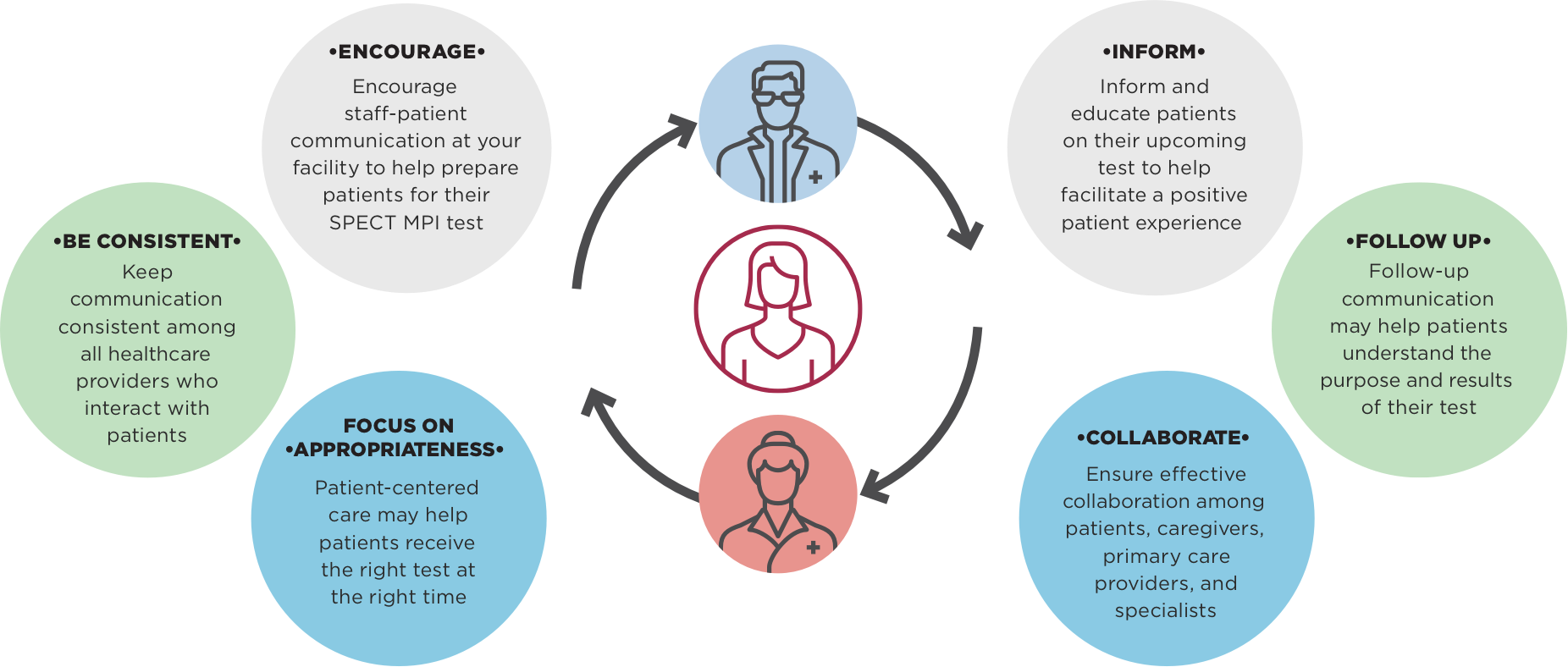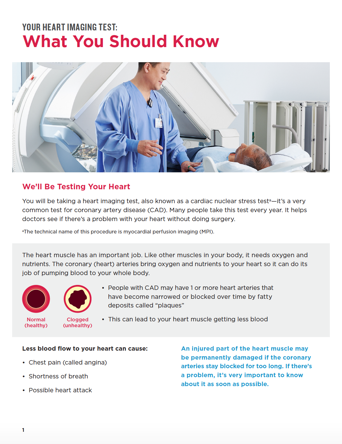Pretest Planning and Communication
Pretest Planning and Communication
The Importance of Communication
A comprehensive dialogue with patients can help them understand what to expect and how to prepare for a nuclear stress test.1 Referring and ordering providers should consider explaining why the test is being performed and how the test results may be used to make decisions about the patient's care.2,3 Another aspect to consider is discussing test options and the potential risks and benefits.
When patients know what to expect, they are more likely to come prepared and have less anxiety. Patient preparation can help improve the patient experience and potentially avoid canceled or rescheduled tests.4
THE IMPORTANCE OF COMMUNICATION:Aspects to Consider


SPECT = single-photon emission computed tomography.
The preparation of patients for stress procedures often differs depending on whether they are receiving an exercise stress or pharmacologic stress test. For both procedures, the American Society of Nuclear Cardiology (ASNC) Imaging Guidelines recommend that the patient fast before the test. For pharmacologic stress, the patient should abstain from caffeine-containing foods or drinks for at least 12 hours before the test.5 ASNC Imaging Guidelines provide more detailed information about how to properly prepare patients for testing.
Sometimes the patient’s ability to exercise is overestimated and they are unable to achieve adequate exercise. Therefore, it may be recommended that patients be prepared for both types of tests so they can be changed to pharmacologic stress.4
Patient Heart Imaging Test Guide
To help referring and ordering providers prepare patients for an MPI test, this guide provides a description of a nuclear cardiac stress test and includes a checklist for getting prepared. It also includes a partial list of foods, drinks, and medications to avoid before the test. Share this resource with your referring and ordering providers to help them inform patients prior to the test.
Find additional patient and practice resources for referring and ordering providers on ordering tests, noninvasive modalities, patient care pathways, preparing for cardiac testing, and more under the Explore Resources tab above.
References+
1. Fihn SD, Blankenship JC, Alexander KP, et al. 2014 ACC/AHA/AATS/PCNA/SCAI/STS focused update of the guideline for the diagnosis and management of patients with stable ischemic heart disease. Circulation 2014;130(19):1749-67. 2. Myers J, Arena R, Franklin B, et al. Recommendations for clinical exercise laboratories: a scientific statement from the American Heart Association. Circulation 2009;119(24):3144-61. Erratum in: Circulation 2013;128:e431. 3. Fazel R, Dilsizian V, Einstein AJ, Ficaro EP, Henzlova M, Shaw LJ. Strategies for defining an optimal risk-benefit ratio for stress myocardial perfusion SPECT. J Nucl Cardiol 2011;18(3):385-92. 4. Wackers FJ, Bruni W, Zaret B, eds. Nuclear Cardiology: The Basics: How to Set Up and Maintain a Laboratory. 2nd ed. Totowa, NJ: Humana Press, Inc., 2008. 5. Henzlova MJ, Duvall WL, Einstein AJ, Travin MI, Verberne HJ. ASNC imaging guidelines for SPECT nuclear cardiology procedures: stress, protocols, and tracers. J Nucl Cardiol 2016;23(3):606-39. Erratum in: J Nucl Cardiol 2016;23(3):640-2.
